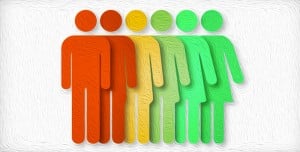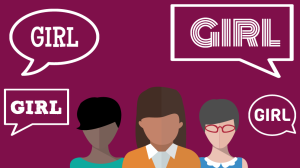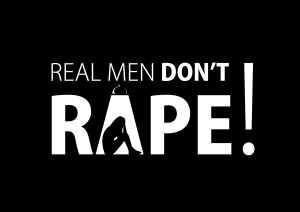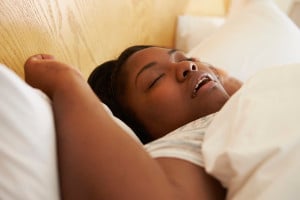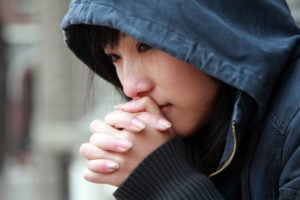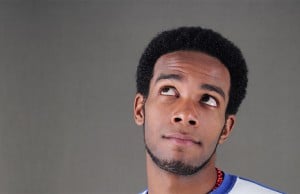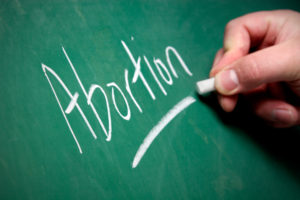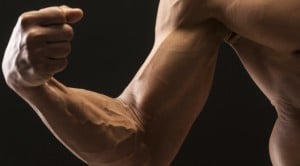Someone once said that most people only have just enough empathy to accept themselves. I’ve found that to often be true, particularly within the LGBTQIA+ community.
While working on transgender military issues, I cannot tell you the number of time that I’ve heard some lesbian and (mostly) gay people who suffered under “Don’t Ask, Don’t Tell,” turn right around and oppose open transgender service.
I’ve heard them use the same talking points against transgender people that were used against LGBQ+ people just a few years ago.
They’re gross.
They’re a distraction.
The military isn’t a social experiment.
Showers.
The talking points and opposition to transgender people are almost never focused on transgender men though. It is nearly universally about transgender women – and the underlying cause is femmephobia.
This does not only affect transgender women negatively; it can be seen across LGBTQIA+ communities, and all of them are harmed by this expression of misogyny. The transgender community seems to absorb the brunt of the backlash, though.
Now, femmephobia is the fear or hatred of all people and things which are perceived as femme, feminine, effeminate, and/or twink, regardless of their gender.
A direct result of femmephobia is the oppression of anyone (men, women, and other genders) whose gender presentation is in any way classified as being on the feminine end of the gender binary, due to their clothing, behavior, or mannerisms.
One recent article summed up how femmephobia starts early and is deeply ingrained in our culture: “I can’t tell you the number of parents I’ve seen who think they’ve somehow failed at feminism because their daughters like lace and Barbie dolls; it’s much rarer to see the parent of a boy upset because his love of Batman and Star Wars doesn’t sufficiently challenge gender roles.”
Femmephobia seems like something that would be much more endemic to straight, cisgender, heteronormative culture. The problem, though, is that femmephobia is alive and well within every facet of the LGBTQIA+ community – and it negatively affects each and every one of them.
Here’s a taste of how.
1. Gay Men Are Affected By External and Internalized Femmephobia
It’s been noted for over a decade that gay men’s singles ads frequently say “no fats, no fems.”
Passing as straight is valued, and being seen as effeminate in any way is viewed as an embarrassing stereotype by a large portion of the gay community. Being anything but 100% stereotypically masculine is viewed by many as weakness, and believed to show a lack of leadership qualities.
While the LGBTQIA+ community is quick to jump on religions that tell gay men they can only be loved if they stop being gay, it’s no less damaging to be told by your own that no one will ever love you if you aren’t straight-passing.
Some have attributed this to parts of the movement’s attempt to mainstream queerness by playing an exaggerated form of respectability politics. There’s a fear that if LGBTQIA+ people don’t look and sound like everyone else, that we’ll be rejected for being too “different” to be palatable to the public.
Another speculation is that some gay men adopt misogynistic attitudes as a defense mechanism to demonstrate that they’re “real men,” too. At some level, femmephobia in the gay community is a self-defense mechanism: those who blend are far less likely to be targets of violence or discrimination.
Thankfully, some elements of the LGBTQIA+ movement (like the Task Force) have tried to reject this narrative, embracing the motto “Be You.”
2. Femmephobia Confines Lesbians
Both gay men and women are encouraged to be more masculine, but for very different reasons.
In lesbian circles, femme invisibility can be a byproduct of femmephobia. There can be pressure to “butch it up” to establish one’s queer credentials.
Lesbians who express their gender in a more stereotypically feminine way are often assumed to be less radical, less feminist, more assimilationist, and more invested in pandering to and sustaining the patriarchy.
Sometimes, a femme gender expression is used to question the validity of a lesbian’s expressed sexual orientation or to claim that their orientation is “just a phase.” A more femme gender expression can also be used to call a lesbian’s sexual orientation into question, labeling her as potentially bisexual.
This is an illogical stigmatization of both lesbian and bisexual women based on gender expression, and playing upon biases against polysexual people.
These artificial constraints on acceptable gender expression don’t make life any easier for queer women, and they coerce people into living inauthentically – which is what we were fighting against in the first place.
And at the heart of this issue is unrealized, internalized femmephobia.
3. Femmephobia Is Part of Bisexual Erasure
Femmephobia impacts women who are bisexual as well. Many lesbians assume that all femme women are either straight or bi.
One lesbian friend of mine put it this way: “When she’s wearing wingtips and has short hair, there’s a better than 50-50 chance you can show interest in her without being smacked down.”
Some bisexual people believe that bi erasure and femmephobia are very closely related. The link is is that all femmes are assumed to be bisexual, and all bisexual people (and particularly women) are assumed to actually be straight.
Other times, femme lesbians are suspected of being bisexual, and therefore avoided by other lesbians because there is the suspicion they might just go back to dating men (even if they have their “gold star”).
Bisexuality is the largest part of the LGBTQIA+ spectrum, and a part of the human spectrum of sexuality. This stigmatizes already nearly invisible and marginalized bisexual women in particular.
One of the biggest issues facing the bisexual community, and bisexual women in particular, is erasure and invisibility.
Femmephobia appears to be one of the root causes of this issue, yet is not addressed nearly often enough in the discussion of how to combat these systemic harms.
4. Femmephobia Leads to the Invisibility of Transgender Men
It’s no secret that transgender women absorb the brunt of hate that comes from femmephobia.
It’s ironic, however, that this single-minded attention on transgender women leads to transgender men being something of an afterthought in all the debates over LGBTQIA+ equality.
When was the last time a Republican state representative had a spittle-spraying freak-out over transgender men in men’s bathrooms?
Ironically, when transgender men transition, their salaries increase by 7%. When transgender women transition, it drops on average by 32%.
Neurobiologist (and transgender man) Ben Barres has seen this effect first hand. He noted that people regarded his work far more highly if they didn’t know he was transgender. After giving a presentation of his work, he heard on audience member remark, “Ben Barres gave a great seminar today, but his work is much better than his sister’s.”
While this might seem like a good thing for transgender men, it doesn’t work out that way. It provides a perverse incentive to stay in the closet and remain isolated.
Transgender men often are able to “blend” more than transgender women, and thus have the option of going “stealth” more frequently. I know of some transgender men (some of whom are who are teachers) who have remained deep in the closet because the stigma of being transgender, and the fear of being seen as anything less than a “real” man.
Maintaining this façade requires strict discipline, like severely limiting the number of people who know. This can often include other members of the LGBTQIA+ community.
It may not be coincidental, then, that transgender men attempt suicide at a rate higher than transgender women. Social isolation has repeatedly to be shown as a risk factor for suicidality, and femmephobia creates a perverse incentive for transgender men to isolate themselves.
5. Transgender Women Are the Nexus of Femmephobia – And the Results Are Devastating
Perhaps no segment of the LGBTQIA+ community suffers from femmephobia more than transgender women. Transgender women are the subject of almost all of the hate and vitriol directed at transgender people.
Of the 23 transgender people murdered in the US in 2015, all of them were transgender women.
Queer feminist pioneer Judith Butler observed in a recent interview that:
Killing is an act of power, a way of re-asserting domination, even a way of saying, ‘I am the one who decides who lives and dies.’ So killing establishes the killer as sovereign in the moment that he kills, and that is the most toxic form that masculinity can take. Trans women have relinquished masculinity, showing that it can be, and that is, very threatening to a man who wants to see his power as an intrinsic feature of who he is.
Also, the rejection of anything feminine by many gay men may have led to vituperative attacks by gay leaders in the movement made against transgender women.
Jim Fouratt, an early leader of the Gay Liberation Front and participant in the Stonewall Riots accused “gay academics and pop journalists” of “embracing this new push to make gay men and lesbians straight by leading them to endure painful physical body manipulation and dangerous hormonal injections to take on the topography of the conventional definition of what is male and what is female.”
Two of the most prominent proponents of an unfalsifiable, pseudo-science theory meant to vilify transgender women are a pair of gay psychologists. Their theory is used by the religious right to argue that transgender people (particularly women) should be legislated out of existence.
One of them regularly trolls the transgender community, and seems to get on very well with Second Wave feminists who also often want the transgender community exterminated.
One can only postulate that something he sees in himself leads him to heap such opprobrium on transgender women, that he will only treat them with dignity if they cop to being disgusting perverts.
He promotes the narrative that transgender women aren’t women, supports reparative therapy on transgender youth, and promotes stories about transition regrets. And yet, he has the chutzpah to claim he’s on our side, as long as transgender people agree their identities are just a sexualized delusion.
Similarly, during the debate on whether to include gender identity in the language of the Federal Employment Non-Discrimination Act (ENDA) in 2007, bill sponsor and gay Democratic Representative Barney Frank was asked about whether he would support inclusion.
He reportedly screamed, “Never!” at the interviewer in a crowded restaurant, and went on a rant about “penises in showers,” despite ENDA specifically excluding bathrooms. In 2007, Executive Director Joe Solmonese broke his promise to only support ENDA if it included gender identity, and followed Rep. Frank’s lead in dropping gender identity from ENDA.
In 2015, a HRC internal report was leaked which found the organization’s culture was “rooted in a white, masculine orientation which is judgmental of all those who don’t fit that mold.” One staff member interviewed was even more blunt: “I see femophobia – feminine men and women are not considered as important.”
This institutional lateral violence against transgender women hasn’t just come from gay men. Former Executive Director of HRC Elizabeth Birch once remarked that inclusion of gender identity in ENDA would happen “over my dead body.”
Finding safety in queer women’s spaces has also been difficult for transgender women, though not nearly as much for trans masculine individuals.
Transgender men, many of whom initially identified as lesbians, are often still accepted (or revered) in queer women’s spaces. One queer woman recently described the spectacle of a trans man holding court to an adoring crowd at a lesbian bar.
Transgender women are often not welcome at all in such spaces, regardless of passability or surgical status.
Transgender women are frequently accused of caricaturizing women if they present as too femme, but have their identities questioned if they present in a less femme way, with considerable overlap between the two.
As a result, transgender women often have no way of safely expressing their gender without it serving as a basis to reject them either way.
6. Femmephobia Is Internalized Misogyny
Femmephobia represents a rejection of the notion that anything about being feminine is beautiful, valuable, or strong. While it has been argued that femininity only exists to please the male gaze, this theory fails in this context when one asks if this also applies to feminine men.
It doesn’t further the cause of equality. It divides us and sets us against one another and diminishes the value of others in the community.
In a movement based on the concept of universal human worth, this is unacceptable.
It’s time for us to make a conscious effort to stop devaluing anything, or anyone, who doesn’t meet some societal stereotype of perfect masculinity.
[do_widget id=’text-101′]
Brynn Tannehill is originally from Phoenix, Ariz and has written for OutServe magazine, The New Civil Rights Movement, and Queer Mental Health as a blogger and featured columnist. Brynn and her wife Janis currently live in Xenia, Ohio, with their three children. Follow her on Twitter @BrynnTannehill.
Search our 3000+ articles!
Read our articles about:
Our online racial justice training
Used by hundreds of universities, non-profits, and businesses.
Click to learn more






